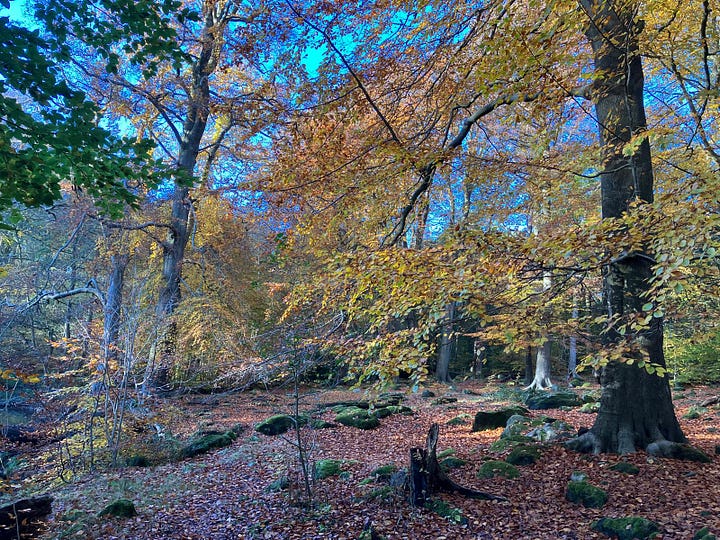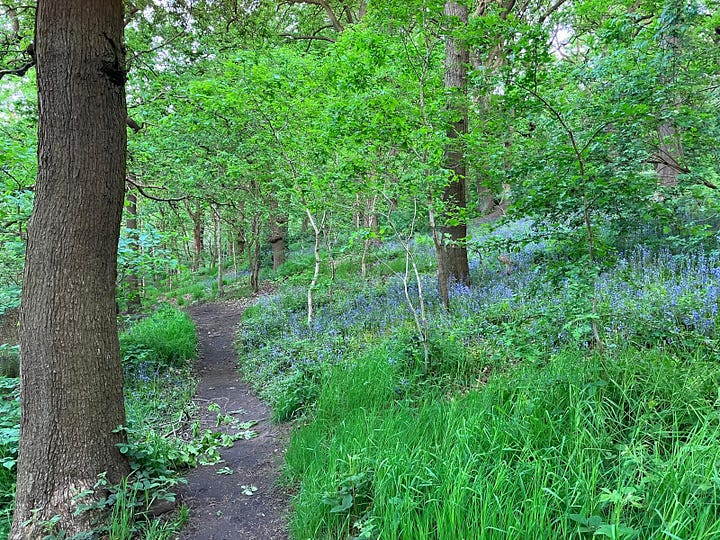To be a serious runner, you have to embrace repetition. Building fitness is a slow and laborious process, and at its core it requires doing the same thing over and over again. Athletes often use the analogy of constructing a house: first laying a foundation or a 'base', before adding a more sophisticated structure on top. It's not a bad metaphor, but the reality would be more like building a house by adding just a single brick each day. It would take many years to finish. This is what training is like.
Throughout my ten years as a runner, I've come to know and love a number of routes that I've run hundreds of times. They normally start and finish at the door of somewhere I've lived (one of the keys to training consistently is making your daily run as resistance-free as possible, and ideally not requiring an extra journey to get there). For the last 2 years, I've lived next door to the Meanwood Valley Trail in north Leeds, which starts in Hyde Park and winds its way through backstreets, parks and woodlands until it reaches the open countryside on the edge of the city. It's an unremarkable trail in many ways, but it's also beautiful, and I appreciate the (almost) daily ritual of running a few miles of it from my flat in Headingley.


The experience subtly changes as the seasons pass by. In winter, it becomes muddy and slow, sometimes flooding completely near a section of woods called The Hollies. In spring, Woodhouse Ridge is littered with bluebells, and in the summer Scotland Wood turns a rich shade of green. I've ran it in all weathers, in bright morning sunlight, and on cold winter evenings where all you can see is the cylinder of light from your headtorch. I've ran it fast when I've felt strong, and walked it when I haven't. When the going is good, it feels like I'm gliding effortlessly down the trail, and my usual 5 mile out-and-back to the Seven Arches Aqueduct passes in the blink of an eye. When it's not, I'll struggle round a 3 mile loop of Woodhouse Ridge, relying on my headphones for distraction. Over the years, I've had similar relationships with laps of Heaton Woods in Bradford, stretches of the Thames Path in Oxford, and the lakes of Christiania in Copenhagen. I don't seek out novelty on my daily run. I embrace repetition.
It's now my sixth week in the mountains, and I'm settling into a similar rhythm. In the weeks between longer, multi-day excursions, every day looks almost the same. I wake up, have a leisurely breakfast at my regular coffee shop, then head into the mountains for a few solitary hours of training. After a pleasant first month in Nasogi, I've moved across the valley just a couple of miles to a village called Vashisht. It's not dissimilar. The village surrounds the Shri Vashishtha Temple, which sits in a small, central square. The main street branches off to the south, and in every other direction a maze of alleyways lead you to shops, cafes, and guesthouses. Vashisht is mostly famous for its sulphurous hot springs, and after a long hike I like to go and have a soak with the local Uncles. I'm on the east side of the Beas River now, and I generally start the day by climbing the same, steep trail which leads towards a summit called Panduropa (3621m). One day last week Manav and I climbed to the summit itself, wading through a few hundred meters of damp snow, but more often than not I'll take a trail which heads off to the north, contouring along the valley before dropping down to the village of Kulang, where within a few minutes I can hitch a ride back along the highway.
Manav is mostly busy these days running his hiking courses, but we get out together once or twice a week, and we've slowly been cementing plans for later in the summer. I think I've done enough to convince him that I'd make a strong partner for the high passes of Ladakh, and so July and August have been filled with various penciled in plans (which I'll expand upon later). For the more committing routes, we're hoping to be a team of four, and until July I consider my job to be ensuring that I won't be a weak link in that team. That means the slow and repetitive work of hiking up and down mountains, gradually solidifying the muscles in my legs, and getting as aerobically fit as possible. In the high mountains, fitness is your biggest weapon. It means you can work at a lower intensity, burn less calories, and your body will protest less as you cross steep moraines with a pack loaded with several days worth of food. If the weather changes, it means you can rapidly retreat. In an emergency, you can get to help faster. It just makes everything easier. With that in mind, I've been putting in four to five thousand metres of elevation each week, and getting more comfortable with the technicality of the trails here.
When you're training hard, it can be difficult to notice the improvements in fitness because you're in a state of chronic fatigue. The legs never really feel fresh. It's only once you take a more substantial recovery period that the gains become tangible. My plan is to put in a huge week of training in week 7, before taking a full week off to absorb what I've done so far. Then, I’ll start a new training block (like most runners, I tend to structure my training with 4 week cycles).
On the last blog, I wrote about our 6 day community hike. The next logical step is to do a big multi-day route on my own. I want to gain confidence navigating myself through this part of the Himalayas, and without relying on a native Hindi speaker to act as my translator. I plan to start from a town called Naggar (about an hour south of Manali), then cross a series of passes and valleys which skirt the edge of the Great Himalayan National Park, finishing a week or so later in a town called Banjar. It will be the longest and most strenuous route I've hiked since fastpacking the Tour du Mont Blanc at the end of last summer. I leave tomorrow.




